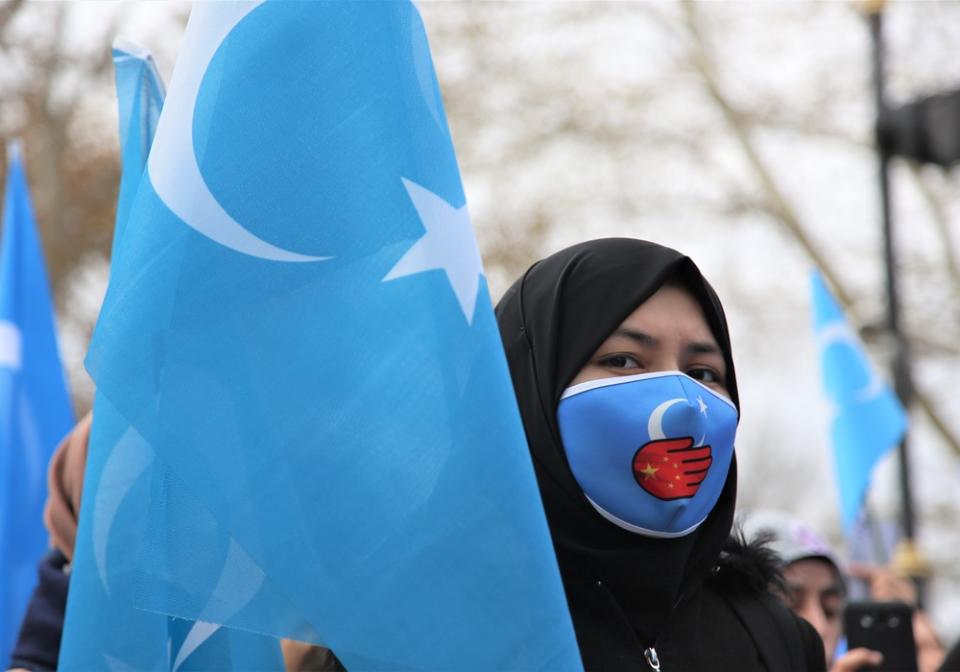What Evidence Shows About China and Uyghur Forced Labor

If the furor over Uyghur forced labor in China shows no signs of dying down, that’s because it isn’t.
If anything, evidence shows that the coercion of persecuted ethnic minorities in the Xinjiang Uyghur Autonomous Region is getting stronger, said Adrian Zenz, a senior fellow in China studies at the Victims of Communism Memorial Foundation.
More from Sourcing Journal
Zenz’s latest research, the first of its kind to be published in a peer-reviewed academic journal, demonstrates that Beijing is “doubling down” on its religious and cultural crackdown against Turkic Muslims, he told Sourcing Journal.
“Basically from new internal state documents, we can see how labor transfers, including picking cotton became especially coercive in 2019, even more so than in 2017,” he said, referring to state-sponsored efforts to mobilize hundreds of thousands of Uyghurs into work placements, sometimes outside their homeland, in the name of so-called “poverty alleviation.”
The government, Zenz said, compiled lists of “lazy persons…and other persons with insufficient inner motivation,” some as old as 77, who would need to pick cotton or else face “repeated thought education” until “obvious results” were achieved. If those weren’t forthcoming, there would be “severe” repercussions, he added.
Zenz said that labor transfers for agricultural harvesting work like cotton picking have persisted through at least 2022 and continue to be “strongly emphasized” in Xinjiang’s official Five-Year Plan for 2021-25.
“It’s very much an ongoing phenomenon,” he noted.
China’s ruling Communist Party has remained vociferous in its denials that forced Uyghur labor is taking place. It says that the widespread mechanization of cotton production means that the need for manual pickers has greatly decreased.
This isn’t quite true, Zenz said. State media reports from 2022, he said, confirm that the highly desired long-staple cotton grown in southern Xinjiang requires a gentler touch and therefore cannot be harvested by machines.
But even areas with partial mechanization only create conditions for a “different form” of forced labor, pulling Uyghur farmers from their land and moving them into strongly surveilled factory environments, where they’re subjected to long work hours, mandatory political indoctrination and evening Mandarin classes, he said.
“So instead of harvesting their own fields, those Uyghurs now might be making a shirt or textile or garment in a factory,” Zenz said. “Mechanization promotes labor transfers.”
While the United States is making a “good start” to tackle the problem by barring the entry of goods made with Xinjiang inputs through the Uyghur Forced Labor Prevention Act, Zenz warned that the European Union’s broader forced labor proposal will not be effective if it doesn’t target Xinjiang specifically. “Static” standard measures such as the International Labour Organization’s forced labor indicators, which take on a “snapshot approach,” cannot fully capture the dynamics of Beijing’s state-sponsored oppression against Uyghurs, he said, meaning that inspectors can easily miss red flags.

While the motivation for state-sponsored forced labor in Uzbekistan’s cotton fields was mostly economic, “enriching the elite,” he said, Xinjiang’s labor transfer programs are predominantly designed to control and indoctrinate Uyghurs while reducing their population densities.
Zenz said that the decade-long boycott of Uzbek cotton by global brands resulted in major reforms, essentially ending forced labor in its cotton sector by 2022. When faced with a similar freeze-out in 2021, Beijing publicly lashed out at companies complying with burgeoning Western sanctions. Chinese consumers shunned Adidas, H&M and others en-masse, causing significant damage to many bottom lines.
In China’s case, calls for “poverty alleviation” are closely tied to ideas of counterterrorism and social security. The government, in fact, cites the possibility of Islam promoting religious extremism to justify its restrictions on Uyghur practices. As one Kashgar official Zenz quoted in the report put it, it’s “an economic issue as well as a political issue.”
“And that means that countries will have to come together and be more in for the long term to combat Xinjiang forced labor,” Zenz said. “It’s going to be a more difficult task than it was in Uzbekistan.”
Indeed, as geopolitical tensions grow between China and the West, companies will find it increasingly challenging to maintain a balance between two “very competing and disparate views” on human rights, said Sofia Nazalya, senior human rights analyst at risk intelligence company Verisk Maplecroft, at a webinar on Thursday.
“Although China does encourage, on paper, businesses to abide by the UN Guiding Principles on Business and Human Rights, it is likely to use this framework as a human rights mouthpiece to demonstrate commitment to social issues, while in turn censoring companies or demanding companies not to report on politically sensitive subjects,” she said. “And obviously Xinjiang being one but by no means the only issue.”
China’s outsized influence with members of the United Nations Human Rights Council, many of which are involved in its ambitious, not to mention lucrative, Belt and Road infrastructure initiative, has also made it difficult to hold it to scrutiny and account.
“When countries such as China [attempt] to obscure [their] human rights record, it really hinders the ability of businesses to gain a transparent picture of the situation on the ground,” Nazalya said. “So this makes it really vital for companies to be able to access independent, credible and objective sources of intelligence to really understand the global human rights risk landscape.”
For Zenz, however, the risks are clear: Uyghurs are continuing to be strong-armed into harvesting cotton against their will.
He said that his report reinforces the need to “basically avoid any Chinese cotton” because more than 90 percent of it hails from the region. But he cautioned importers to be careful about sourcing cotton textiles from South and Southeast Asia because fibers from Xinjiang could be mixed in, obscuring their origin. To stop this “slow genocide” in its tracks, there needs to be a “containment strategy” that creates a “significant distance” from Xinjiang’s supply chains, Zenz said.
“It’s a growing international situation, not just in the U.S.,” he added.

